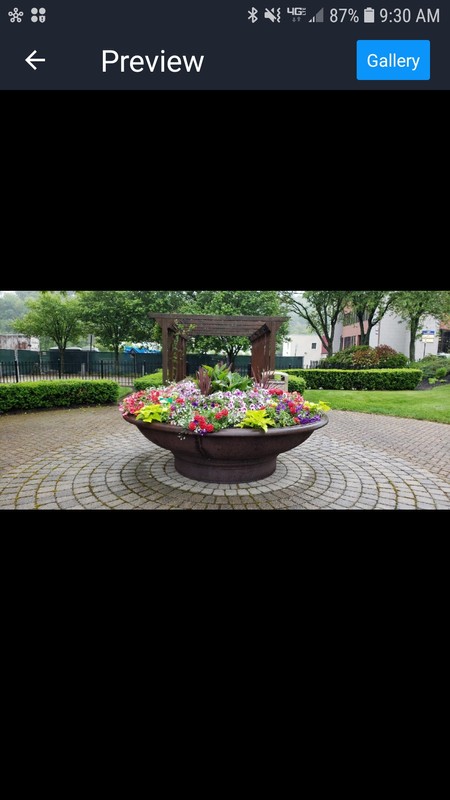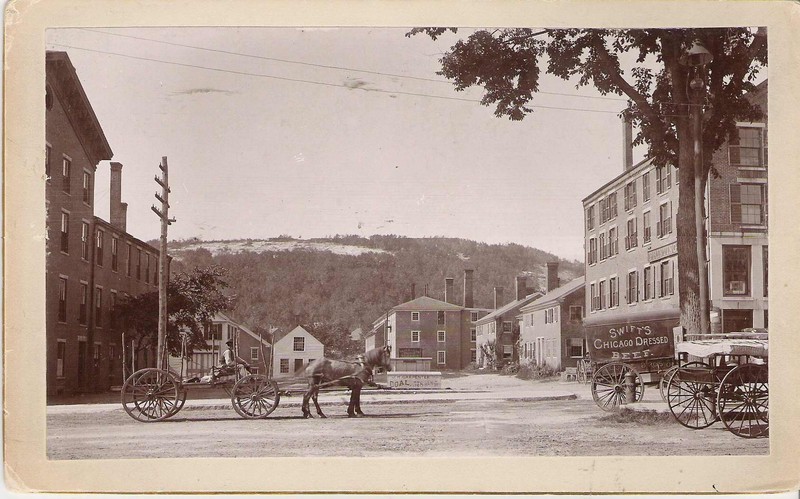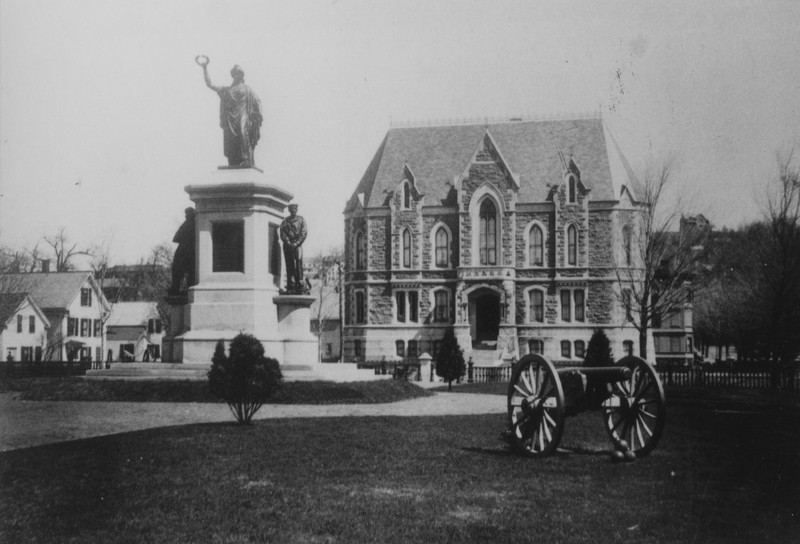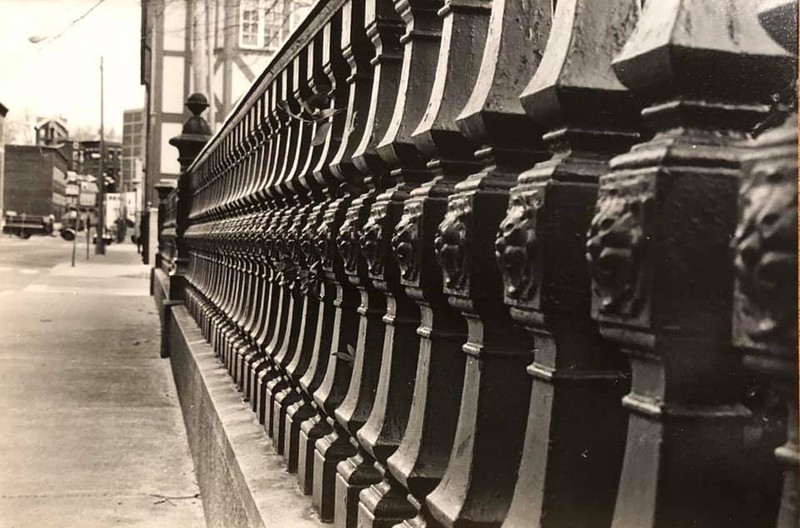Monument Park and the Monuments on Main Street
Introduction
Text-to-speech Audio
Heading east on Main Street from the Upper Common to Monument Park, you will see a watering trough of the 1880's from the Fitchburg Historical Society that is now used for flower plantings by the Laurelwood Garden Club. Passing in front of the 1851 City Hall, renovated in 2020, you will pass in front of the Fitchburg Public Library, by architect Carl Koch. Opposite the public library is Monument Park, honoring the city's participation in the Civil War, and the Civil War Soldiers' monument by Boston sculptor Martin Milmore (1874).
Images
1880's watering trough, planted by Laurelwood Garden Club

Early view of Factory Square, now a park and Rollstone Bank building

Postcard of Youth Library

Milmore Civil War Monument, in front of County Courthouse, also 1870's

Photo of monument park by David Lyon

Backstory and Context
Text-to-speech Audio
The cast iron watering trough was one of four troughs donated to the city in the 1880's by philanthropist Rodney Wallace, as a kindness to the city's horses. This was the "Old Sentinel" trough, located next to the Sentinel Elm, itself a Main Street landmark that grew in front of the Fitchburg Sentinel building, not far from the trough's current location. Moved back to Main Street in 2019 after many decades on Grove Street, this trough is planted yearly with elaborate floral designs by the Laurelwood Garden Club, honoring the memory of club member and Historical Society supporter Julia Casey. The park where the trough is located was originally Fitchburg's "Factory Square", where the city's first textile mill and worker dormitories were located. A view can be found here: https://bit.ly/3covn13
The Fitchburg Public Library has created a tour of its art and sculpture collection in a brochure that can be requested from the Library or the Fitchburg Historical Society. The library building contains two sections, designed by architect Carl Koch and Associates in the mid-century modern style. In 1899, a children's room was added to the original Wallace library building: it was one of the first children's rooms in the country. Later, the current children's library was constructed in 1950 as the first freestanding children's library in the country. In 1964, private and federal funds were raised to replace the 19th century library with the current building, which opened in 1967 and was dedicated to George R. Wallace, Jr. and Alice Wallace. Here's a current view: https://bit.ly/3fL0whF
The Civil War Soldiers' Monument, 1874, by sculptor Martin Milmore, can be found standing in the center of Monument Park.
Sculptor Martin Milmore emigrated from Sligo, Ireland to Boston in 1851 and became a celebrated sculptor when only in his 20's. This monument, along with Monument Park surrounding it, was commissioned to commemorate Fitchburg's immense contributions to the Civil War effort. Besides providing so many soldiers that Fitchburg fulfilled its initial enlistment goals without a draft, the city also provided officers to train and lead the troops and initiatives by Fitchburg's women that led to the nationwide Ladies' Aid Society, which provided personal and medical supplies to Union soldiers. Later, Fitchburg created a Civil War veterans group that predated the G.A.R. (Grand Army of the Republic) and may have inspired the creation of that national group. The park and monument were dedicated in 1874. Many years later, Fitchburg's Civil War veterans were honored in a speech given by Theodore Roosevelt during a visit to the city. Here's a great present-day view of the monument and park: https://bit.ly/2WLLyz5
At one time Monument Park was the center of buildings representing the City, County, State and Federal governments. The current District Court Building was the Post Office (federal), the Superior Court Building, was a Worcester County building, the Senior Center was the Armory, a State Building (before Massachusetts Governor Sargent turned the building over to the City of Fitchburg) and the Library was city owned and run. This rare combination of institutions was written up in Ripley's Believe it Or Not cartoon.
Sources
Historical files of the Fitchburg Historical Society.
Barry, Darren. Union and Empancipation - Conflating Revolutionary Heritage with Abolitionist Practice: Civil War Collective Memory in Fitchburg, Massachusetts, 1861-1930. Chadron State College, MA Thesis in Education - History, December 2015.
Fitchburg Historical Society collection, photo by Philip Jordan, Sr.
Fitchburg Historical Society collection
Fitchburg Historical Society collection
Fitchburg Historical Society
Fitchburg Historical Society Facebook group
